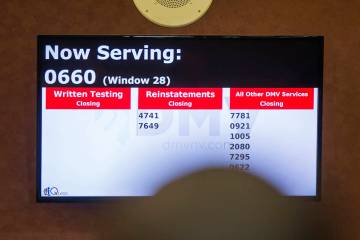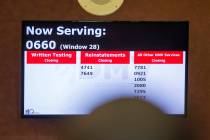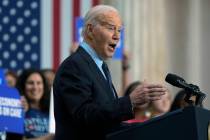EDITORIAL: Texas provides Nevada a model for pension reform
Facing more than $14 billion in unfunded liabilities, Texas recently reformed one of its largest public employee pension systems. Given Nevada’s pension debt, lawmakers here should be looking to follow suit and proactively address a looming problem.
Around the turn of the century, the Employees Retirement System of Texas was fully funded. Not anymore. This year, it had an unfunded liability of $14.7 billion. History has proved that politicians typically ignore these types of problems — which makes them worse in the long term — or increase contribution rates.
Recently, Texas lawmakers did something better. They overhauled their state’s retirement system to ensure this won’t happen again, while protecting retirees and current employees.
Workers who previously would have enrolled in ERS will now have access to a cash balance plan. They will receive their own individual retirement account. Employees will contribute 6 percent of their pay, and employers will add 9 percent. Percentages are slightly higher for law enforcement employees, who retire earlier.
Employees will receive a guaranteed rate of return of 4 percent annually. Employees and the system will then split market returns up to a maximum annual return of 7 percent. The system will keep higher returns to prepare for future downturns.
This reform helps the state by reducing its downside risk when the market crashes. Instead of the current assumed rate of return of 7 percent, the guaranteed rate of return is a much more manageable 4 percent. For comparison, Nevada’s Public Employees’ Retirement System of Nevada assumes a 7.5 percent rate of return.
Texas’ current pension debt didn’t disappear. The state will be paying it down over the next few decades. That will be costly, but being proactive is a better alternative than letting the unfunded liabilities continue to grow. Over the next 30 years, the Reason Foundation projected this reform will save Texas $15 billion.
Texas isn’t the only state to pass substantial pension reform in recent years. Arizona, New Mexico and Michigan have done so as well.
Nevada lawmakers should be paying close attention. In 2020, Nevada PERS’ funding ratio was 76.1 percent. Its official unfunded liability was almost $14 billion in June 2020. That’s similar to the amount that spurred Texas lawmakers into action, and Texas’ population is nine times greater than Nevada’s. Presumably, the rising stock market has boosted PERS’ fiscal health, but a large problem remains.
Nevada lawmakers shouldn’t continue to passively accept higher contribution rates that hurt government employees and strap state and local government budgets. They need to make pension reform a priority.




























